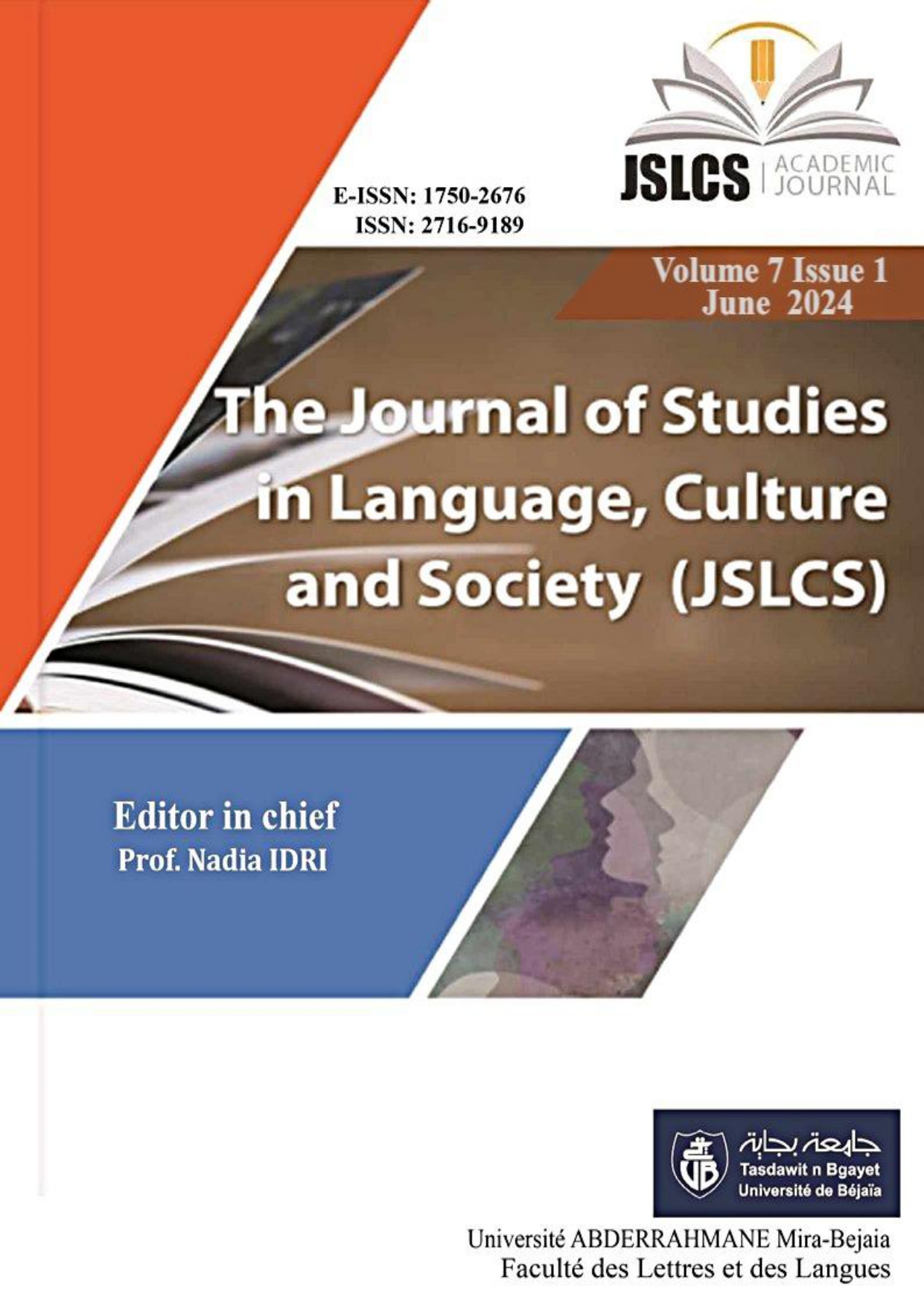Exploring Writing Challenges In Research Article Introductions Across Diverse Scientific Disciplines Within Educational Settings
Keywords:
Assessment Criteria, Error Analysis, Research Papers, Readability Scores, Text ComplexityAbstract
This study examines challenges faced by authors in crafting impactful introductions for research articles across diverse scientific fields within educational settings. Analyzing 103 research articles written by non-native English speakers, we conducted a detailed error analysis, assessed readability scores, and explored correlations to identify specific writing difficulties unique to this critical section. While prevalent grammatical errors, such as article usage and subject-verb agreement, were identified, readability scores suggested a moderate to challenging level of comprehension. Significant variability in text complexity and writing styles was observed, emphasizing the need for tailored guidance to address individual author needs. Positive correlations were found between factors like article usage and grammar accuracy, while negative correlations emerged between aspects like paragraph length and sentence length. These findings contribute significantly to understanding writing challenges in research introductions, providing valuable insights for authors and educators. By improving the clarity and impact of research introductions, this study has potential applications in enhancing knowledge dissemination and supporting evidence-based decision-making across various sectors.
References
Armağan, A. (2013). How to write an introduction section of a scientific article?. Turkishjournal ofurology, 39(Suppl 1), 8–9. https://doi:10.5152/tud.2013.046
Batini, C., & Scannapieco, M. (2018). Data and information quality: Dimensions, principlesandtechniques. New York, NY: Springer Publishing Company.
Bellour, L. (2021). Publish or perish: scholarly publishing challenges in Africa. Journal of Studiesin Language, Culture, and Society (JSLCS), 4(2), 132-142.https://www.asjp.cerist.dz/en/article/178421
Blake, J. (2021). Scientific research articles: Twenty-two language errors to avoid. In J. Smith(Ed.),Improving scientific communication for lifelong learners (pp. 195-219). IGI Global.https://doi:10.4018/978-1-7998-4534-8.ch011
Bruce, I. (2009). Results sections in sociology and organic chemistry articles: Agenre analysis.English for Specific Purposes, 28(2), 105-124. https://doi.org/10.1016/j.esp.2008.12.005
Cargill, M., & O'Connor, P. (2021). Writing scientific research articles: Strategy andsteps.John Wiley & Sons. Cortes, V. (2013). The purpose of this study is to: Connecting lexical bundles and moves inresearcharticle introductions. Journal of English for academic purposes, 12(1), 33-43.https://doi.org/10.1016/j.jeap.2012.11.002
Crossley, S. A. (2020). Linguistic features in writing quality and development: Anoverview. Journal of Writing Research, 11(3), 415-443. https://doi.org/10.17239/jowr-2020.11.03.01
Gledhill, C. (2000). The discourse function of collocation in research article introductions. English for Specific Purposes, 19(2), 115-135. https://doi.org/10.1016/S0889-4906(98)000155
Hirano, E. (2009). Research article introductions in English for specific purposes: A comparison between Brazilian Portuguese and English. English for Specific Purposes, 28(4), 240-250.https://doi.org/10.1016/j.esp.2009.02.001
Holmes, R. (1997). Genre analysis, and the social sciences: An investigation of the structure of research article discussion sections in three disciplines. English for Specific Purposes, 16(4),321-337. https://doi.org/10.1016/S0889-4906(96)00038-5
Idri, N. (2015). Focusing teacher’s practices, learners’ attitudes and study skills through action research. Arab World English Journal (AWEJ), 6(4), 261-274.https://awej.org/images/AllIssues/Volume6/Volume6number4Decmber/21.pdf
Kallet, R. H. (2004). How to write the methods section of a research paper. RespiratoryCare,49(10), 1229-1232. https://cancer.dartmouth.edu/sites/default/files/2019-05/methods-section.pdf
Lu, C., Bu, Y., Wang, J., Ding, Y., Torvik, V., Schnaars, M., & Zhang, C. (2019). Examining scientific writing styles from the perspective of linguistic complexity. Journal of the Association for Information Science and Technology, 70(5), 462-475.https://doi.org/10.1002/asi.24126
Maftuna Abdurasulova. (2024). Strategies for fostering writing and speaking proficiency in EFL through task-based learning. Лучшие интеллектуальные исследования, 17(2), 120–127.http://web-journal.ru/index.php/journal/article/view/3738
Martıń , P. M. (2003). A genre analysis of English and Spanish research paper abstracts inexperimental social sciences [Doctoral dissertation, University of La Laguna, SanCristóbalde La Laguna).
Miller, J. (2005). Most of ESL Students Have Trouble with the Articles. International Education Journal, 5(5), 80-88. https://iej.cjb.net/
Muxayyo, R. (2023). Methodology to development of students writing skill through technical texts. American Journal of Research in Humanities and Social Sciences, 9, 92-94.
Navaz, A. M. (2021). Importance of learning grammar for academic writing: Difficulties faced by TESL students in academic writing. KALAM–International Journal Faculty of Arts and Culture, South Eastern University of Sri Lanka, 14(1), 2021.https://www.researchgate.net/publication/353764573
Ozturk, I. (2007). The textual organisation of research article introductions in applied linguistics: Variability within a single discipline. English for Specific Purposes, 26(1), 25-38.https://doi.org/10.1016/j.esp.2005.12.003
Peacock, M. (2002). Communicative moves in the discussion section of research articles. System,30(4), 479-497. https://doi.org/10.1016/S0346-251X(02)00050-7
Pho, P. D. (2008). Research article abstracts in applied linguistics and educational technology: Astudy of linguistic realizations of rhetorical structure and authorial stance. Discourse studies,10(2), 231-250. https://doi.org/10.1177/1461445607087
Prayuda, M. S., Juliana, J., Ambarwati, N. F., Ginting, F. Y. A., & Gultom, C. R. (2023). Students’ Writing Error in Parts of Speech: A Case Study of EFL Students. Jurnal EducatioFKIPUNMA, 9(2), 659-665. https://doi.org/10.31949/educatio.v9i2.4419
Rakhimova, S. T. (2023). Writing matters in EFL. Educational Research in Universal Sciences,2(4), 124-127. https://t.me/Erus_uz
Ramzan, M., Mushtaq, A., & Ashraf, Z. (2023). Evacuation of difficulties and challenges for academic writing in ESL learning. University of Chitral Journal of Linguistics &Literature,7(1), 42-49. https://doi.org/10.33195/maxskq26
Samraj, B. (2002). Introductions in research articles: Variations across disciplines. English for Specific Purposes, 21(1), 1-17. https://doi.org/10.1016/S0889-4906(00)00023-5
Samraj, B. (2005). An exploration of a genre set: Research article abstracts and introductions intwodisciplines. English for Specific Purposes, 24(2), 141-156.https://doi.org/10.1016/j.esp.2002.10.001
Shah, J. N. (2015). How to write ‘introduction’ in scientific journal article. Journal of Patan Academy of Health Sciences, 2(1), 1–2. https://doi.org/10.3126/jpahs.v2i1.20331
Shodieva, M. (2023). Developing summary writing skill in academic writing. Modern Science and Research, 2(9), 140-144. https://inlibrary.uz/index.php/science-research/article/view/24062








